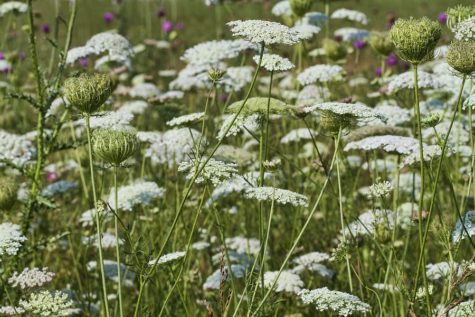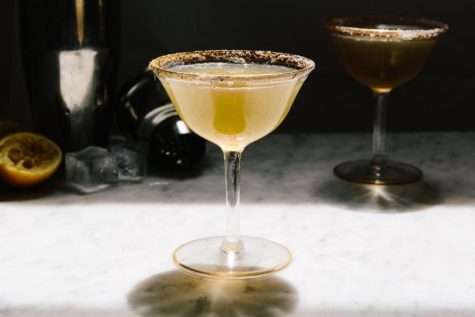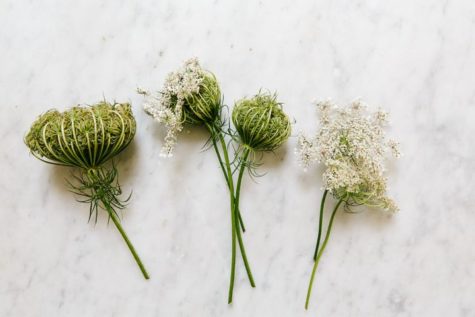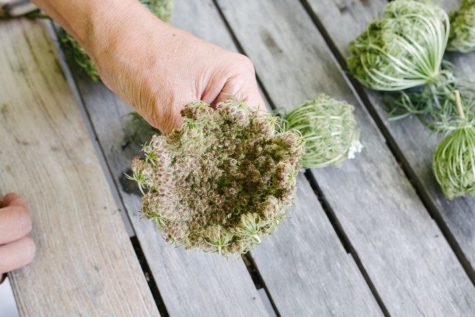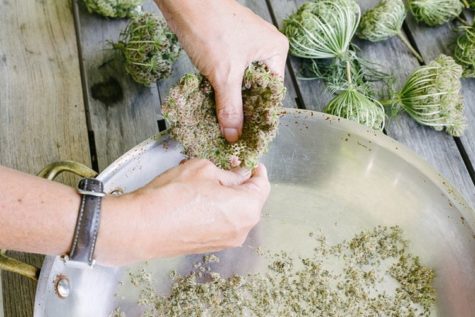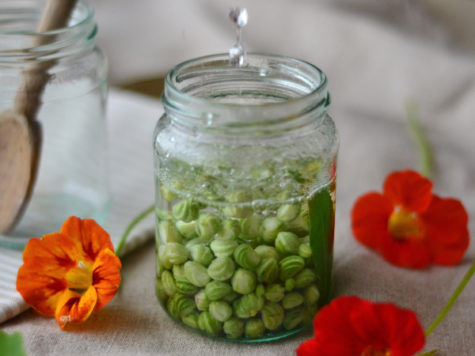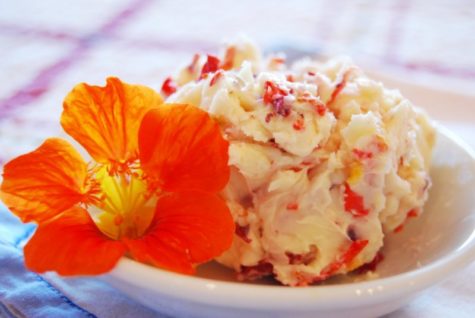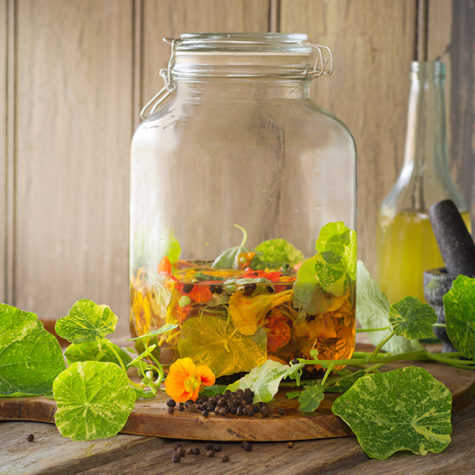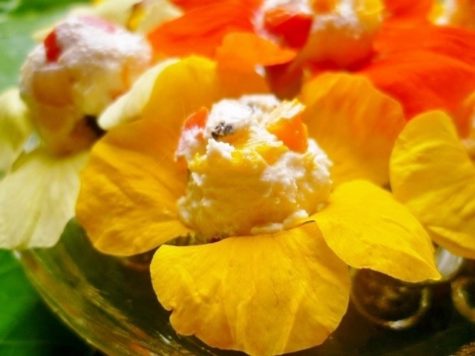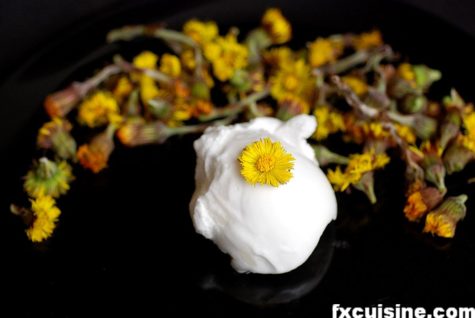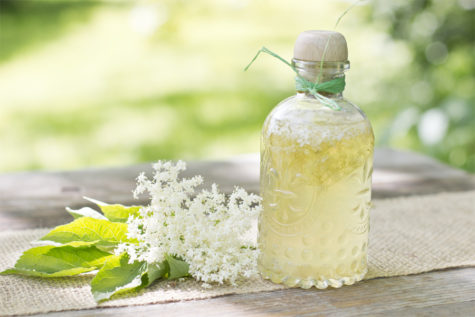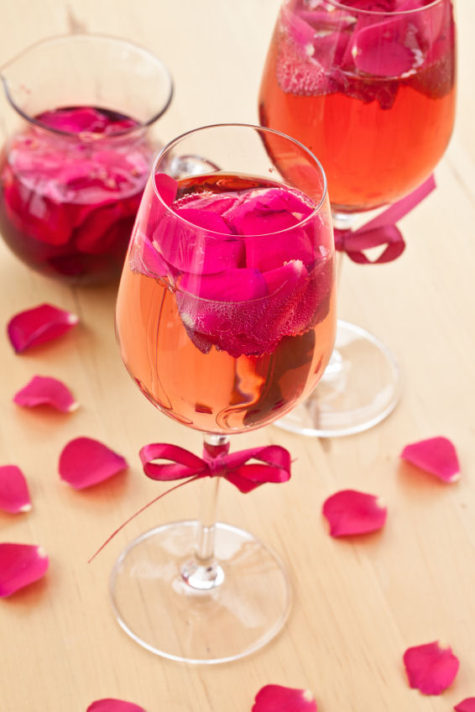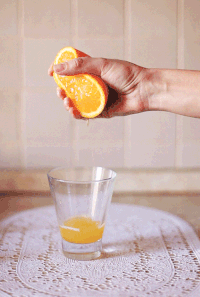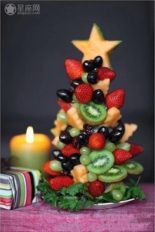Flowers
Queen Anne’s Lace Jelly
- 18 large Queen Anne’s lace heads
- 4 Cups water
- ¼ Cup lemon juice (fresh or bottled)
- 1 Package powdered pectin
- 3 ½ Cups + 2 Tbsp. sugar
Bring water to boil. Remove from heat. Add flower heads (push them down into the water). Cover and steep 30 minutes. Strain.
Measure 3 cups of liquid into a 4 – 6 quart pan. Add lemon juice and pectin. Bring to a rolling boil stirring constantly. Add sugar and stir constantly. Cook and stir until mixture comes to a rolling boil. Boil one minute longer, and then remove from heat.
Add color (pink) if desired. Skim. Pour into jars leaving ¼” head space. Then process in a hot water bath for 5 minutes.
Makes about 6 jars
Important Notice:
Historically, Queen Anne’s lace was used for medicinal and contraceptive purposes. Avoid it if you are pregnant, and check with your doctor if you are currently taking medications. More information about this wild herb can be found here: Encyclopedia of Herbology – Wild Carrot
The carrot family contains a number of poisonous look-alikes, most notably poison hemlock. Once the fruit has formed, it is easy to tell them apart, but less so when the plants still only have leaves.
When foraging, always choose high-quality landscapes (not next to the highway or on post-industrial or sprayed sites), and make sure to obtain permission if it is not your own yard. If possible, go out with an experienced forager.
Found at: Herbal Riot
Queen Anne’s Lace Cognac Apéritif
On late-summer evenings, I take the chill off with a cognac apéritif, the rim of the glass dipped in spicy Queen Anne’s Lace.
For the rim:
- 3 tablespoons dried Queen Anne’s Lace fruits
- 1 1/2 tablespoons fine sugar
Crush the dried Queen Anne’s Lace fruits with the sugar and mix thoroughly. (To save effort for multiple drinks, we made a larger batch with the same 2:1 ratio.) Spread the mixture on a saucer or plate that is larger than the diameter of the glass rim. Moisten the rim of the glass by dipping it upside down in a shallow bowl of water and let the excess water drip off for a few seconds. Dip the moistened rim in the Queen Anne’s Lace/sugar mixture, pressing down firmly. The mixture should cling to the rim where moistened. Gently shake off any excess.
Note: Instructions on collecting the Queen Anne’s Lace fruits can be found here: Queen Anne’s Lace
For the drink:
- 2 ounces cognac (I suggest Pierre Ferrant 1840)
- 3/4 ounce fresh Meyer lemon juice or bergamot juice
- 3/4 ounce honey syrup (equal parts honey and hot water)
- 1 teaspoon dried Queen Anne’s Lace fruit
In a cocktail shaker, combine cognac, lemon juice syrup, and ice. Shake vigorously for half a minute or until chilled. Pour the mixture through a strainer (to remove the Queen Anne’s Lace bits) and into the rimmed glass. Serve immediately.
Makes 1
Important Notice:
Historically, Queen Anne’s lace was used for medicinal and contraceptive purposes. Avoid it if you are pregnant, and check with your doctor if you are currently taking medications. More information about this wild herb can be found here: Encyclopedia of Herbology – Wild Carrot
The carrot family contains a number of poisonous look-alikes, most notably poison hemlock. Once the fruit has formed, it is easy to tell them apart, but less so when the plants still only have leaves.
When foraging, always choose high-quality landscapes (not next to the highway or on post-industrial or sprayed sites), and make sure to obtain permission if it is not your own yard. If possible, go out with an experienced forager.
Found at: Food 52
Queen Anne’s Lace
Queen Anne’s Lace looks delicate, but its fruit’s pungent flavor and spice is anything but dainty. The flowers of the wild carrot, or Queen Anne’s Lace, are as edible as the stringy root — but the culinary gem is its fruit. Because each fruit is so small and the harvest window is relatively short, I hadn’t even noticed them until recently. But when I looked closely, I could see that each cluster was full of hundreds of small, eye-shaped fruits.
I picked the bunches with the largest fruit (some of the fruit was red, and some was still green), checking the aroma by breathing deep into their flower nests. The scent can vary, but they are heavily fragrant — oftentimes peppery with hints of coriander and carrot. This complexity is the essence of wild flavors.
To harvest, clip the cluster, remove the fruits from the frame, and dry them under gentle heat (such as a heat lamp or dehyrdrator); you can store them whole to use as a spice or seasoning at will. Once they dry, their strong aroma will dissipate, but give them a quick grind in the Cuisinart, blender, or mortar and pestle and — violà! — the pungent fragrance returns.
One of my favorite ways to use this spice is to sprinkle it on top of carrot cake for an added kick. It’s also wonderful in carrot salads, caramelized on top of crème brulée, or infused into jelly.
Important Note:
Historically, Queen Anne’s lace was used for medicinal and contraceptive purposes. Avoid it if you are pregnant, and check with your doctor if you are currently taking medications. More information about this wild herb can be found here: Encyclopedia of Herbology – Wild Carrot
The carrot family contains a number of poisonous look-alikes, most notably poison hemlock. Once the fruit has formed, it is easy to tell them apart, but less so when the plants still only have leaves.
When foraging, always choose high-quality landscapes (not next to the highway or on post-industrial or sprayed sites), and make sure to obtain permission if it is not your own yard. If possible, go out with an experienced forager.
Found at: Food 52
Pickled Nasturtium Seeds
Use green nasturtium seeds, and in picking retain a short length of stem on each. Lay the seeds in cold salted water for two days (two tablespoons salt to one quart water), then place them in cold water for another day. Drain well and place the seeds in a glass jar, cover with vinegar heated to the boiling point, and close the jar tightly. In a few days the seeds will be ready to use. They are an excellent substitute for capers.
From: Herbal Gardens
Nasturtium Lemon Butter
This lovely butter has a mild lemon/pepper flavor and a colorful appearance. It is wonderful on fish, chicken and vegetables. This is also great on those small party breads, pumpernickel especially.
- 1/2 cup unsalted butter softened
- 1-2 teaspoons grated lemon peel (according to taste)
- 1 tablespoon lemon juice
- 3 tablespoons finely chopped nasturtium blossoms
Mix all of the ingredients well until smooth and well blended. Refrigerate or freeze until ready to serve. Makes 3/4 cup flavored butter.
From: Herbal Gardens
Nasturtium Vinegar
Nasturtiums have a wonderful peppery flavor and add zest to any recipe.
- 1 cup nasturtium leaves, flowers, and buds
- 1 pint champagne or white wine vinegar
Place the ingredients in a clean clear glass jar or bottle. Tightly seal. Let sit for at least 3 weeks before using. Place a new nasturtium in the finished bottle for decoration, but you should make sure the vinegar always covers the flowers or they will mold. Makes 1 pint vinegar to use in salads, sauces and flavoring in other dishes.
From: Herbal Gardens
Stuffed Nasturtium Flowers
Nasturtium flowers have a wonderful peppery flavor.
Mix 8 ounces softened cream cheese with 2 Tablespoons finely minced chives or other herbs of your choice. Stuff the mixture into nasturtium flowers and place on a tray that has been lined with nasturtium leaves. Serve at room temperature.
From: Herbal Gardens
Coltsfoot Sorbet
Ingredients
- 65 fresh coltsfoot flowers
- 1 cup organic cane sugar
- 3 1/3 cups water
- 1 tsp fresh squeezed lemon juice
- 1 egg white
Instructions
Make sure you have only the yellow petals from 65 coltsfoot flowers. (Remove the petals by rubbing the flowers between your thumb and forefinger. Make sure there are no green sepals in with the petals.)
Place the petals, sugar and water into a pan. Bring to a boil and cook for 2 minutes then remove from the heat and let steep for 20 minutes. Filter through a sieve and refrigerate the syrup until chilled. Add the egg white and whisk. Either place in an ice cream maker or in the freezer. As the sorbet churns, the egg white will trap air bubbles and this turns the sorbet white. If you have chosen the freezer method you will need to whisk briskly every five minutes for the first hour, then every fifteen minutes until the sorbet sets.
Note: For information on coltsfoot, including cautions and contraindications, visit The Encyclopedia of Herbology – Coltsfoot
Source: Edible Wild Food
Elderflower Vinegar
Here is a very old recipe for Elderflower Vinegar:
Take 2 lb. of dried flowers of the European Elder. If you use your own flowers, pluck carefully their stalks from them and dry them carefully and thoroughly. This done, place in a large vessel and pour over them 2 pints of good vinegar. Close the vessel hermetically, keep it in a very warm place and shake them from time to time. After 8 days, strain the vinegar through a paper filter. Keep in well-stoppered bottles.
This is an old-world simple, but rarely met with nowadays, but worth the slight trouble of making. It was well-known and appreciated in former days and often mentioned in old books; Steele, in The Tatler, says: ‘They had dissented about the preference of Elder to Wine vinegar.’
From: A Modern Herbal
Honey Rose Petal Wine
- 4 quarts fresh rose petals
- 4 gallons boiling water
- 6 lbs honey
- 4 lemons
- 1 quart eglantine (sweet brier rose) leaves- optional
- 1 ounce yeast (baker’s or wine)
Place the rose petals in a clean, warm ceramic crock. Pour the boiling water over these. Cover and let stand for five days, stirring every day. Strain; pour back into the crock.
Add the honey, sliced lemons, and eglantine leaves; stir well. Add the yeast, which has been softened in 1/2 cup lukewarm water. Cover and let stand for two weeks.
Strain again and pour into bottles. Leave the bottles uncapped for three days; then cap and cork. Do not drink for at least two months.
Source: Honey Cookbook
